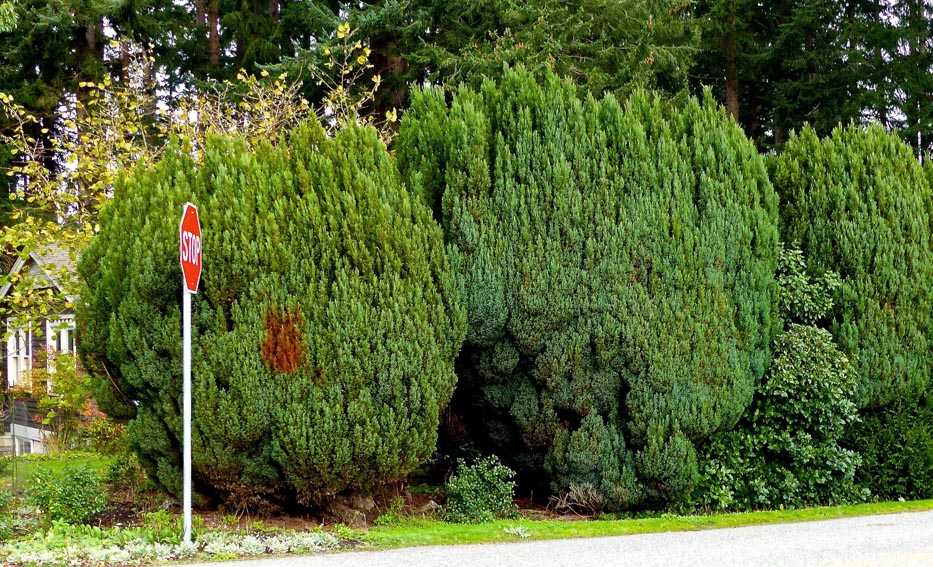Landscape designers in cities are creating quieter living spaces by using trees to mute loud noises like sirens and air brakes. It’s called “soundscaping,” and it aims to restore peaceful, natural sounds like wind whispering through leaves, birds chirping or rain dripping from branches.
“Massive walls are often installed to quiet freeway noise in major cities, but there are more aesthetic ways to handle it,” said Tim Moloney, who teaches landscape design at the University of Missouri. “Use vegetation for minimizing the background clatter.”The denser a tree’s lower branches, the better it masks or deflects bothersome noise, Moloney said. Evergreens are the preferred vegetative sound barriers because they are densely branched and are attractive year-round. Ideally, shrubs would be a major component of any green muting mix.
“The thing with shrubs is you don’t have the height of a tree but they grow more quickly,” Moloney said. “Along with density, choose vegetation having desirable landscape qualities — fruit, flowers, canopy shapes, fragrance and fall colors. And for best results, plant them on an earthen berm.”
Urban noise has become so annoying in many places that soundscaping has grown into a popular landscape-design specialty, Moloney said.
“The first line of defense is buffering,” he said. “That overshadows background noise just by virtue of proximity. Add a screen of vegetation and then look for other options. Perhaps the soothing sounds of a waterfall or a stream.”
Healthy urban forests make for healthier neighborhoods and improve quality of life, said R.J. Laverne, an arborist and urban forester with The Davey Tree Expert Co. in Kent, Ohio.
“Trees give us green spaces that get us outside, where we’re more likely to walk and get exercise,” he said. “They also help reduce stress levels. We can concentrate better and feel less fatigue.”
Trees also improve air quality. “Trees absorb many of the air pollutants through their foliage,” Laverne said. “They provide a place for the particulate matter to stick. It’s the stuff floating through the air we inhale that aggravates our lungs.”
The cooling shade from trees also provides economic benefits, Laverne said: “Among other things, we don’t have to run our air conditioners as much.”
One challenge facing soundscapers in urban areas: There often isn’t enough space for planting trees and shrubs between the noise source and homes, especially for trees with low-hanging foliage.
“But if you have a dense enough tree canopy, it doesn’t have to be designed as a physical wall,” Laverne said. “Foliage, branches and trunks do a pretty good job of dispersing sound energy, especially in the high frequency ranges.
“Sound waves travel horizontally,” he said. “When foliage reflects it in different directions, it’s diminished. Sounds aren’t as loud.”
Online:
For more about using vegetation for sound screening, see the Georgia Forestry Commission publication: http://www.gfc.state.ga.us/resources/publications/greenbuffersforscreeningandnoisereduction.pdf

